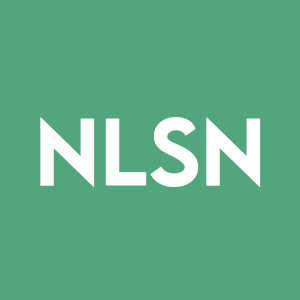Streaming Platforms Leading The Way In On-screen Diverse Representation
Rhea-AI Summary
Nielsen's latest report, Being Seen on Screen: Diverse Representation and Inclusion on TV, reveals that 92% of the 300 most-viewed programs in 2019 had diverse casts. However, representation remains low for certain groups, particularly women, Hispanics, and Asians. Streaming platforms excel in inclusion compared to cable and broadcast. The report emphasizes the importance of quality representation, noting that diverse programming yields higher audience ratings. Key insights indicate significant opportunities for media companies to improve inclusivity in their content.
Positive
- 92% of the top 300 programs in 2019 featured diverse casts, indicating a trend towards better representation.
- Streaming platforms show better diversity compared to traditional cable and broadcast channels.
- Diverse programming tends to yield higher audience ratings.
Negative
- Representation of certain identity groups, particularly women and minorities, remains low relative to population estimates.
- One-third of cable content lacks parity representation for Indigenous and People of Color.
- Women are only represented 38% of the time on screen, despite comprising 52% of the US population.
Insights
Analyzing...
NEW YORK, Dec. 3, 2020 /PRNewswire/ -- The explosion of new television platforms across broadcast, streaming and cable has led to an increase in on-screen representation of diverse identity groups, according to Nielsen's latest Diverse Intelligence Series report: Being Seen on Screen: Diverse Representation and Inclusion on TV.
Among the 300 most-viewed programs in 2019,
In this report, Being Seen on Screen: Diverse Representation and Inclusion on TV, Nielsen reports on scripted, reality, variety and news programming on key metrics:
- Share of Screen (SOS)[1]: composition of the top 10 recurring cast members in a program
- Inclusion Opportunity Index (IOI): compares the SOS of an identity group (e.g. women) to their representation in population estimates
- Inclusion Audience Index (IAI): compares the SOS of an identity group to their representation in a program's audience.
The report is powered by Gracenote Inclusion Analytics, a new solution delivering cutting-edge metrics created from Gracenote content metadata and Nielsen audience measurement data, providing the industry with consistent and reliable measurement of granular viewing. The report also leverages Gracenote Video Descriptors, metadata relating to story, mood, character, theme and scenario in each program.
Key insights from the report include:
Overall, representation of diverse identity groups in on-screen programming is low across all media platforms. Streaming fares better for inclusion followed by broadcast and cable. Viewing audiences are increasingly seeking content that tells their stories. As a result, people are migrating to platforms that have broad and more diverse content offerings.
- Representation by platform (Broadcast, Cable, Streaming): Nearly one-third of the content on cable doesn't have parity representation of Indigenous, People of Color (Black, Native American, Asian & Pacific islander, Hispanic/Latinx, Middle eastern/ North African, Multiracial), Women or LGBTQ talent.
- Subscription video on demand (SVOD) programming represents several identity groups e.g. Blacks, Hispanic and Asians well, helping us understand, in part, why more diverse audiences are subscribing to streaming services than the general population.
- Representation of identity groups by genre (e.g. comedy, drama, news):
- While women are not well represented in any single genre, the highest representation for women is in science fiction, drama, comedy and horror.
- Women have the lowest representation in news.
- People of color representation is at parity in music and drama, followed by science fiction and action and adventure.
- People of color have least relative representation in news.
- News does prominently feature LGBTQ talent on-screen.
- Reality and horror programming also prominently feature LGBTQ talent.
All audiences, regardless of how they identify, like to see diversity in the content they view on TV. Programs that represent multiple identity groups evenly yield higher overall audience ratings for all viewers when compared to shows that have a significant over or under representation of any one identity group.
Quality of representation matters too. The themes and narratives depicted on-screen can contribute to identity formation and social perceptions. As the industry seeks to improve diversity on-screen, content creators and publishers should consider the context in which women, people of color, and LGBTQ+ talent are presented. Equally important is investing in marketing those diverse programs so that they are watched.
- Women insights
- Comprise
52% of the U.S. population; show up on screen only38% of the time - Women 50+ years old
60% less likely to see themselves in programming than in the general population, and 2x the representation of men 50+- Women 50+ comprise
20% of the population and20% of all TV viewers, but have a SOS of less than8% - Men 50+ years old are
17% of the total population and have SOS of14% - LGBTQ+ insights
- 1 out of 4 top performing programs across cable, broadcast and streaming have relative representation of LGBTQ+ cast members
- Total SOS for LGBTQ was
7% . LGBTQ people are4.5% of the population[2] so across all platforms we see fair representation - The highest level of representation is on SVOD (
8% SOS), followed by cable (7% ) then broadcast (5% ).
Aligning representative casting and content themes is an area of opportunity. In the programming where identity groups see themselves represented at parity, these are the themes that are most present:
- Latinas: dysfunction, emotional, suspenseful, melodramatic, police stations
- Black women: emotional, personal relationships, sons, investigation, rivalry
- Black men: investigation, thrilling, streets, pursuit, teamwork, discovery
- East Asians: challenge, courage and bravery, justice, sons, discovery
- South/Southeast Asian males: thrilling, awakening, offices, courtrooms
- White women: friendship, family, love, husbands, daughters
Nielsen's findings aim to show media owners the degree to which their programming is inclusive, coupled with the diversity of the audience they draw. Additionally, brands and agencies will now be able to measure their advertising investment and alignment to inclusive content. The identity groups measured included: Female, Male & Expansive Gender Identities, Black/African American, Hispanic, Asian & Pacific Islander, Middle Eastern/North African, Multiracial, White, Native American/Native Alaskan, and Sexual Orientation. The data, which was both intersectional and granular, enables Nielsen to look at specific identity subsegments like Afro-Latino or Southeast Asian.
"At Nielsen, we believe that the audience is everything and that inclusion is a prerequisite of a healthy media ecosystem, ensuring all communities and individuals are heard and seen," stated Tina Wilson, Nielsen EVP, Media Analytics and Marketing Outcomes. "The call for inclusive programming that breaks traditional stereotypes and gives a voice to underrepresented groups has never been louder."
"This work underscores the essential importance of on-screen representation in an increasingly diverse audience landscape," said Sandra Sims-Williams, Nielsen SVP, Diversity, Equity and Inclusion. "Not only is the business case for inclusion made but it also provides practical recommendations on how media companies can address inclusion gaps. This is a must-read for any media professional who wants to be part of the change that today's television viewers demand."
For more details and insights, download Being Seen On Screen: Diverse Representation & Inclusion on TV. Please visit nielsen.com/inclusionanalytics to learn more. Join the discussion on Facebook (Nielsen Community) and follow us on Twitter (@NielsenKnows).
ABOUT NIELSEN
Nielsen Holdings plc (NYSE: NLSN) is a global measurement and data analytics company that provides the most complete and trusted view available of consumers and markets worldwide. Our approach marries proprietary Nielsen data with other data sources to help clients around the world understand what's happening now, what's happening next, and how to best act on this knowledge. For more than 90 years Nielsen has provided data and analytics based on scientific rigor and innovation, continually developing new ways to answer the most important questions facing the media, advertising, retail and fast-moving consumer goods industries. An S&P 500 company, Nielsen has operations in over 100 countries, covering more than
[1] Share of Screen is weighted using episode occurrence at the program level. It is additionally weighted by minutes viewed at the genre and platform level.
[2] LGBT Demographic Data Interactive. (January 2019).
Los Angeles, CA: The Williams Institute, UCLA School of Law.
![]() View original content to download multimedia:http://www.prnewswire.com/news-releases/streaming-platforms-leading-the-way-in-on-screen-diverse-representation-301185827.html
View original content to download multimedia:http://www.prnewswire.com/news-releases/streaming-platforms-leading-the-way-in-on-screen-diverse-representation-301185827.html
SOURCE Nielsen








